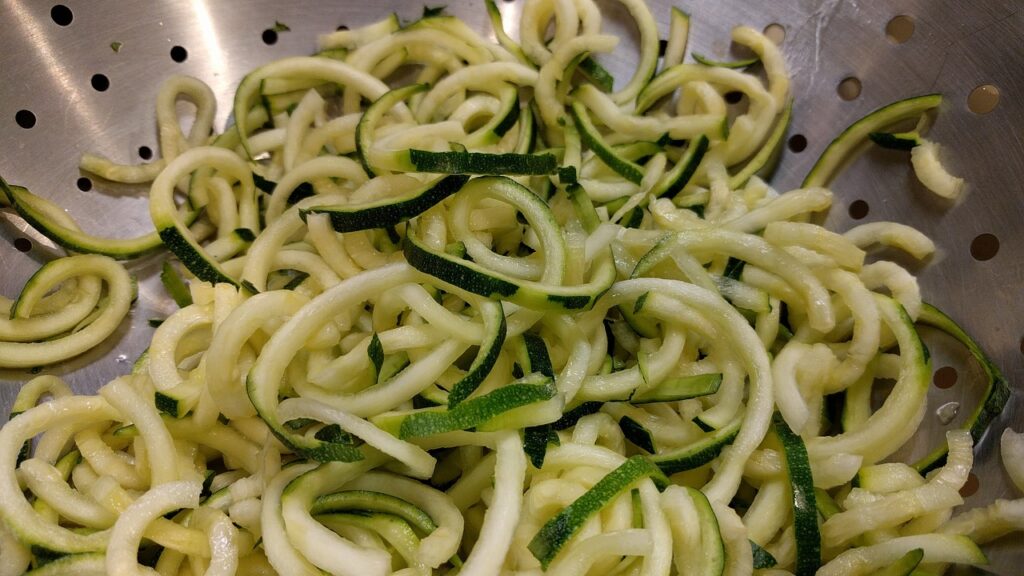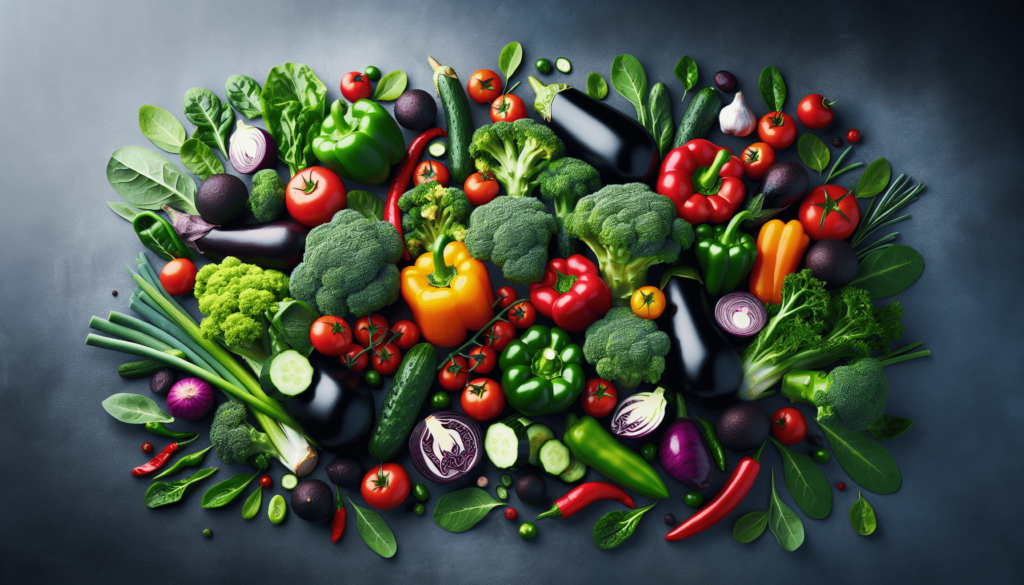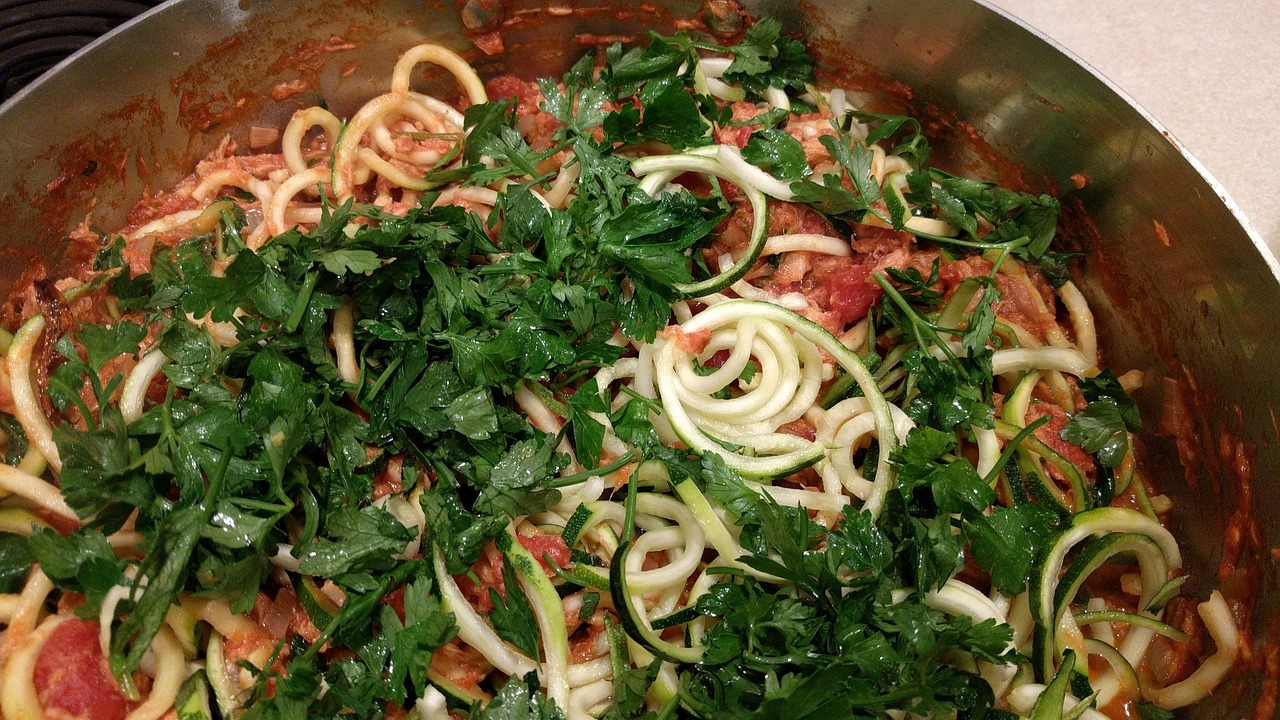Embarking on a keto journey can sometimes feel like navigating a culinary maze, but fear not, as the path to Keto Diet Success is lush with an array of low-carb vegetables that not only align with your nutritional goals but also bring zest and variety to your plate. With a keen focus on delivering comprehensive nutritional insights, culinary inspiration, and practical advice, this article is your ultimate guide to keto-friendly vegetables. From understanding the specific benefits these greens offer within a ketogenic lifestyle, to exploring how to seamlessly incorporate them into your meals, equipped with the latest research and trends, you’re about to discover how to enhance your diet without compromising on taste or health.

Transform Your Diet: Free Keto eBook Inside!
Understanding Keto Diet and Low-Carb Vegetables
Overview of the ketogenic diet and its macronutrient requirements
Embarking on a ketogenic diet means you are choosing a lifestyle that prioritizes fats as your primary energy source, encouraging your body to enter a state of ketosis. In this state, your body efficiently burns fat for energy rather than relying on carbohydrates. To achieve and maintain ketosis, your daily intake typically consists of about 70-75% fats, 20% protein, and a surprisingly small portion of 5-10% carbohydrates. This precise balance is crucial for unlocking the full potential of your keto journey.
Importance of choosing the right vegetables in a keto diet
Not all vegetables are created equal, especially on a keto diet. Given the limited carbohydrate allowance, choosing the right vegetables — those low in carbs but high in nutrients — becomes paramount. This selective approach ensures you get the vitamins, minerals, and fiber needed to support your health without disrupting ketosis.
The role of fiber in low-carb vegetables
Low-carb vegetables are not just low in sugars; they’re often high in fiber, which is essential on a ketogenic diet. Fiber can help manage blood sugar levels, contribute to a healthy gut microbiome, and support overall digestion. As it’s a carbohydrate that your body doesn’t digest, it doesn’t count towards your net carb total, allowing you to enjoy a variety of vegetables while staying within your carb limit.
Leafy Greens: A Keto Favorite
Nutritional benefits of leafy greens
Leafy greens like spinach, kale, and arugula are nutritional powerhouses packed with vitamins A, C, K, and minerals like iron and calcium. They’re also incredibly low in carbohydrates, making them perfect for maintaining ketosis.
Keto-friendly leafy greens: spinach, kale, and arugula
Spinach, kale, and arugula stand out as the top picks for anyone on a keto diet. Their versatility in meals — from salads to smoothies — makes them easy to incorporate into your diet, ensuring you reap their health benefits daily.
Creative ways to include leafy greens in keto meals
Beyond the usual salad, get creative by blending spinach into your morning smoothie, sautéing kale as a side dish, or using arugula as a peppery base for a keto-friendly pizza. These simple additions can make your meals more interesting and nutritious.
Transform Your Diet: Free Keto eBook Inside!
Cruciferous Vegetables for Keto
Benefits of cruciferous vegetables in a low-carb diet
Cruciferous vegetables like broccoli, cauliflower, and Brussels sprouts are champions of any low-carb diet due to their high fiber content and rich nutrient profile, including vitamin C, vitamin K, and folate.
Examples: Broccoli, cauliflower, and Brussels sprouts
These vegetables not only provide essential nutrients but also add volume and flavor to your meals without a significant carb increase, making them ideal for keeping you full and satisfied.
Tips on how to prepare and enjoy cruciferous vegetables
Roasting, steaming, or sautéing these vegetables can enhance their flavor. Try roasting Brussels sprouts with bacon, mashing cauliflower as a potato substitute, or adding broccoli to a stir-fry. The variations are endless and delicious.
The Versatility of Zucchini and Squash
Nutritional profile of zucchini and squash
Both zucchini and squash are low in carbs and calories but high in valuable nutrients like vitamin A, vitamin C, and potassium, making them fantastic additions to a keto diet.
Incorporating zucchini and squash into keto recipes
Their versatility makes it easy to incorporate them into your diet. Use them in noodles (zoodles), as a pizza crust base, or simply grill them as a side.
Zoodle making and other low-carb alternatives
Creating zoodles is a fun and easy way to replace traditional pasta. You can also slice them into thin sheets for lasagna, offering you the comfort foods you love without the carbs.

Avocado: The Keto Powerhouse
Health benefits of avocados
Avocados are incredibly nutritious, offering nearly 20 vitamins and minerals, including potassium and folate. They’re rich in monounsaturated fats, which promote heart health, all while fitting perfectly within the keto macros.
How to include avocados in your keto diet
You can enjoy avocados in numerous ways — from slicing them up for a salad, mashing them for guacamole, or even blending them into a smoothie for a creamy texture. The possibilities are endless.
Avocado-based keto snacks and meals
Consider avocado toast on keto bread, an avocado smoothie with coconut milk, or simply sliced avocado as a side dish. Its versatility and health benefits make it a keto favorite.
The Keto Potential of Mushrooms
Types of mushrooms best for keto
Portobello, shiitake, and button mushrooms are all excellent choices for those on a keto diet, offering variety in flavor and texture while remaining low in carbs.
Nutritional benefits of mushrooms
Mushrooms are more than just low carb; they’re also a great source of B vitamins, selenium, potassium, and, surprisingly, protein. This makes them an excellent addition to any meal for a nutrient boost.
Innovative keto recipes featuring mushrooms
Consider using large Portobello mushrooms as pizza bases or burger buns, adding shiitake mushrooms to a keto-friendly stir-fry, or simply sautéing button mushrooms as a flavorful side dish.

Bell Peppers: A Splash of Color and Nutrients
Choosing the right bell peppers for keto
While all bell peppers are keto-friendly, the green varieties tend to be lower in carbs. However, the red, yellow, and orange peppers offer extra nutrients, such as beta-carotene and antioxidants, providing a good balance between carbs and nutritional value.
Nutritional values of different colored bell peppers
Bell peppers are not only an excellent source of vitamins A and C but also contain potassium, fiber, and folate. Their vibrant colors add visual appeal and an array of antioxidants to your dishes.
Keto-friendly bell pepper recipes
Stuffed bell peppers with ground meat and cheese, bell pepper nachos, and bell pepper stir-fry are all fantastic ways to enjoy this vegetable’s flavor and maintain your keto diet.
Asparagus: Low in Carbs, High in Flavor
Health benefits and nutritional info of asparagus
Asparagus is a spring favorite that’s not only low in carbohydrates but also a great source of fiber, vitamins A, C, E, K, and folate. It even has antioxidant and anti-inflammatory properties.
Preparing asparagus for keto diets
Its natural sweetness when roasted, grilled, or sautéed makes asparagus a delightful side that complements any main dish. You can also wrap it in bacon for an extra keto touch.
Combining asparagus with other keto-friendly foods
Asparagus works well in a variety of dishes, including frittatas, salads, and soups. Its versatility makes it easy to incorporate into your keto meal plan.

Choosing and Using Low-Carb Vegetables in Keto Meals
How to select the freshest low-carb vegetables
Look for vibrant colors and firm textures. These indicators often reflect not only the vegetable’s freshness but also its nutrient content. Always opt for organic when possible to avoid pesticide exposure.
Storage tips to prolong freshness
Most low-carb vegetables will last longer if stored in a cool, dry place, some even do better in refrigeration. Proper storage not only prolongs their shelf life but also retains their nutritional value.
Creative meal planning with keto vegetables
Experiment with different preparation methods like roasting, grilling, or raw options for salads. A varied meal plan ensures you never get bored while enjoying the full range of nutrients available.
The Future of Keto: Trends in Low-Carb Vegetables
Emerging research on the benefits of low-carb vegetables
Continuous studies highlight the importance of vegetables in maintaining overall health, particularly in a high-fat diet such as keto. Nutrient-dense, low-carb vegetables play a critical role in disease prevention and longevity.
Innovative keto-friendly vegetable products
With the rising popularity of keto, many brands are introducing vegetable-based products specifically designed for keto dieters. From pre-cut vegetable noodles to low-carb vegetable chips, these innovations make following a keto diet more convenient and enjoyable.
How to stay updated with keto trends and low-carb vegetables
Follow keto-focused blogs, social media influencers, and subscribe to health and wellness newsletters. Staying informed will help you discover new products, recipes, and research findings that can enhance your keto experience.
With a mindful approach to selecting and preparing low-carb vegetables, your keto journey can be deliciously satisfying and nutritionally balanced. Enjoy the myriad of flavors, textures, and nutrients that these vegetables offer, and let them be the foundation of your keto success.

